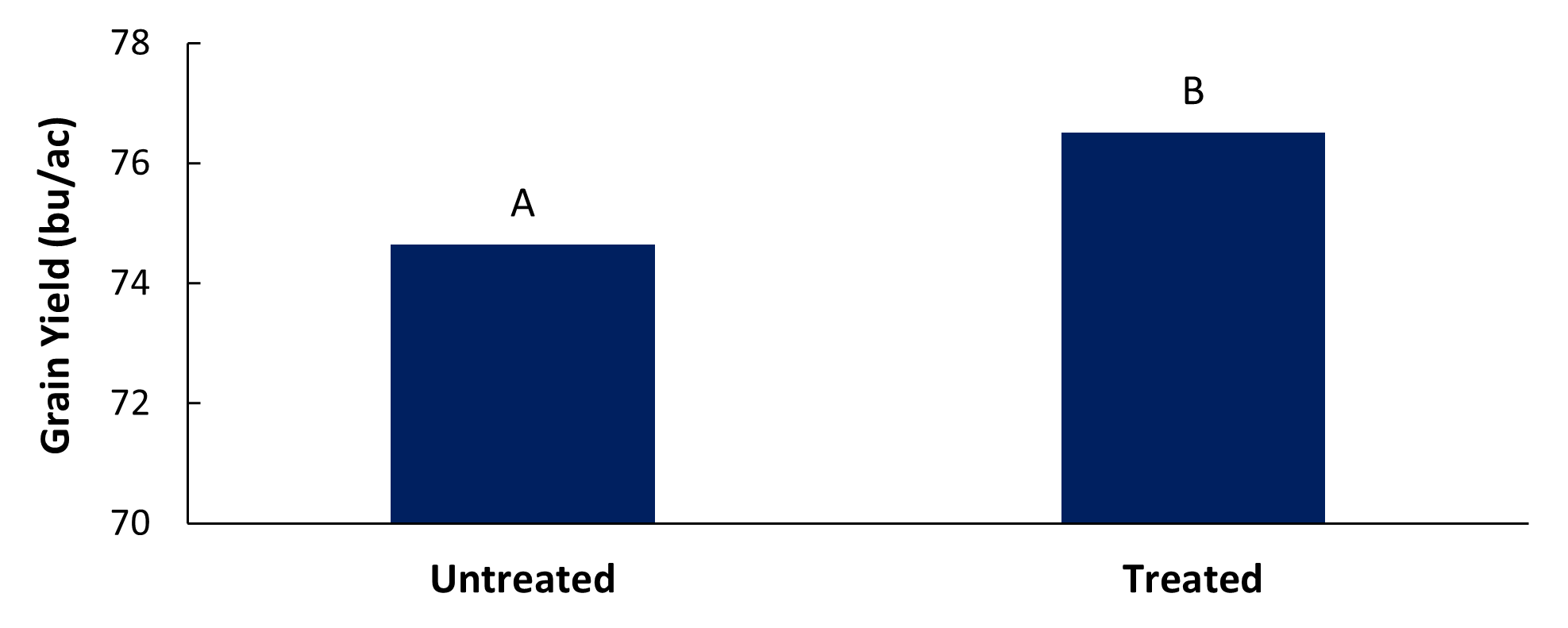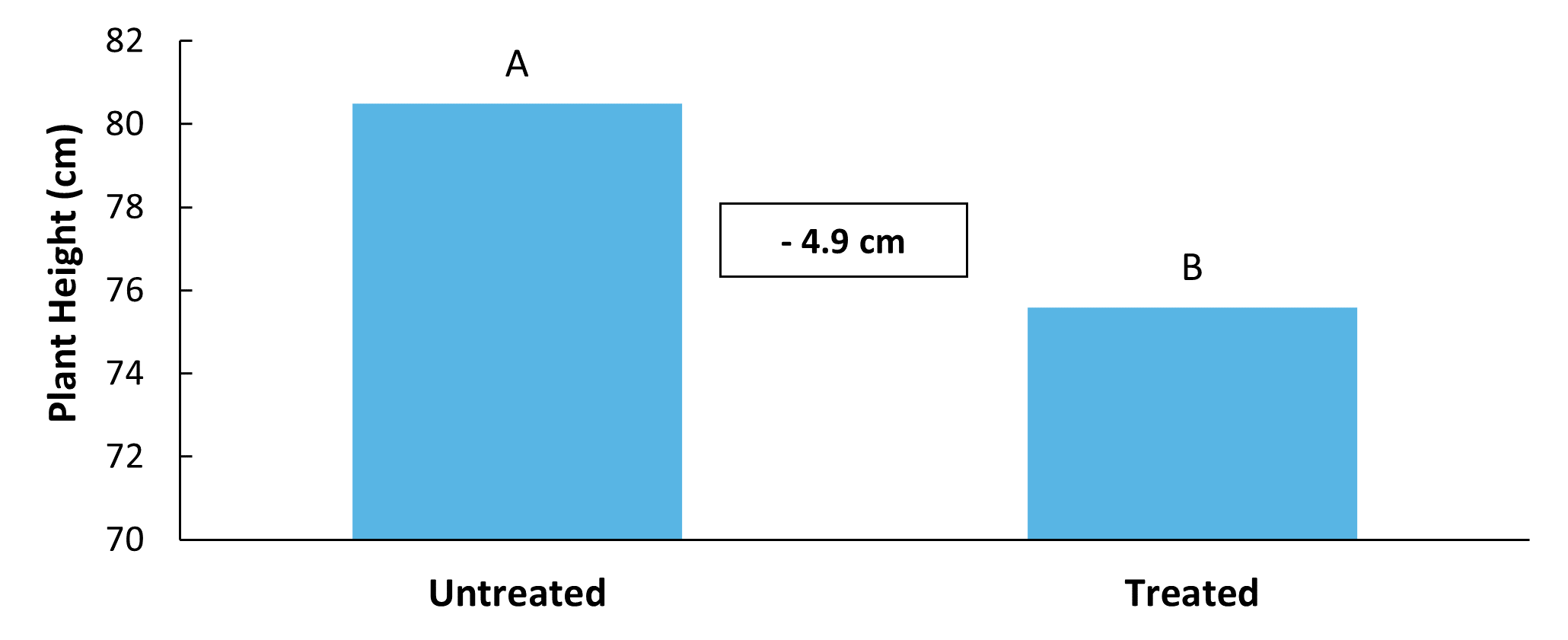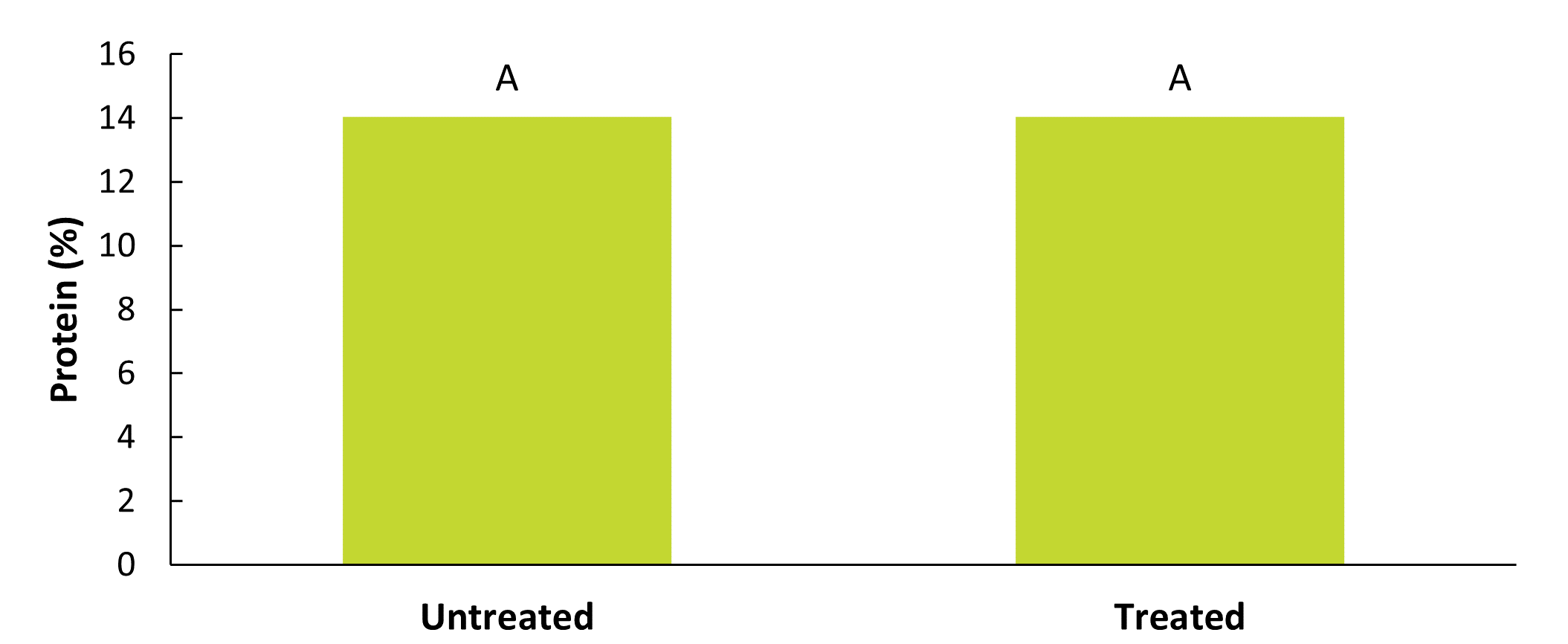Research on the Farm – Looking at the Effect of Plant Growth Regulators on Spring Wheat

Lodging is a major production issue in cereal crops. Cereals are especially prone to lodging in high-yielding environments. The greatest losses tend to occur 10 days to two weeks after head emergence. Plant growth regulators (PGRs) are a management tool available to reduce lodging in certain circumstances. PGRs are synthetic compounds that alter hormonal activity in the plant to modify plant growth and development, and are typically used to improve standability as they produce shorter, thicker stems. When are they warranted?
According to Anne Kirk, Cereal Specialist with Manitoba Agriculture and Resource Development, a PGR is most likely to be beneficial when you are growing a variety that is prone to lodging, using intensive management practices, and have high yield potential. “If a farmer is using a variety that might be prone to lodging and using a high nitrogen rate that will increase the plant growth, there is an increased risk of lodging and a farmer may want to consider using a PGR,” says Kirk.
Certain varieties respond more to PGR applications than others as PGR response is very variety specific. Conditions have to be really good for plant growth to consider using a PGR. Have growing conditions been really favourable? Does the wheat or other crop have really good yield potential? Environmental conditions leading up to PGR timing and the crops growth and yield potential could warrant it, especially if it’s a variety prone to lodging. On the other hand, if a plant is under any stress such as waterlogging, drought, nutrient deficiency, frost, insect or disease damage, a PGR should not be used. Since the plant is already under stress, applying a PGR could cause unintended consequences.
There are two main types of PGRs registered for use on spring and winter wheat, oats and barley in Western Canada – Manipulator and Moddus. The active ingredient in Manipulator is chlormequat chloride and the active ingredient in Moddus is Trinexapac-ethyl. Although the two have different active ingredients, their application timing and the crops they are registered for use on are quite similar.
“I think farmers would like to apply a PGR as a tank mix (with herbicides or fungicides), but the ideal timing for application is between herbicide timing and fungicide timing,” adds Kirk. “Herbicide timing is too early because the nodes haven’t emerged above the soil surface, and fungicide timing is too late (if targeting flag leaf timing for fungicide) because those nodes have already elongated. Applying a PGR isn’t going to shorten the plant at that point, it would just prevent future growth.”
Through the Research on the Farm program, Manitoba Crop Alliance (MCA) has been testing the efficacy of Manipulator since 2016, and is adding Moddus to the program in 2021. The objective of the Research on the Farm trial is to quantify the agronomic and economic impacts of using a PGR on plant height, lodging, yield and quality of wheat.
The PGR trial has run for three growing seasons (2018-2020) at a total of 32 sites. Three indicators were measured to get an idea of how the PGR application performed compared to the untreated check strips, grain yield (bu/ac), plant height (cm) and grain protein (percent). A small but significant effect was observed on grain yield, where a PGR application resulted in an average increase of 1.9 bu/ac. Similarly, plant height was also significantly impacted, where treated strips were on average 4.9 cm shorter than untreated check strips. Average grain protein across all site-years was 14.0%, for both treated and untreated strips, and no significant differences were observed. All three growing seasons (2018-2020) were relatively dry. Ideally, MCA would like to see data from a year with more moisture.
Figure 1. Average grain yield across all site-years (2018-2020) was 74.6 bu/ac for untreated strips and 76.5 bu/ac for strips treated with a PGR, resulting in a statistically significant yield increase of 1.9 bu/ac (P<0.05).
Figure 2. Average plant height across all site-years was 80.5 cm for untreated strips and 75.6 cm for strips treated with a PGR, resulting in a significant height reduction of 4.9 cm (P<0.05).
Figure 3. Average protein content was 14.0% for both untreated and treated strips across all site-years. No significant effect on grain protein content was observed in these trials.
Amy Mangin, a Ph.D. student at the University of Manitoba, is looking at PGR use in spring wheat as part of her research project. The project investigates PGRs and their interactions with different spring wheat varieties, nitrogen management strategies and planting densities. It also compares yield, protein and nitrogen use efficiency of spring wheat with and without PGRs.
“We’re looking at lodging as a whole aspect. Measuring things like stem strength, rooting plate, internode lengths and stem diameter,” says Mangin. “We’re using more detailed measurements to quantify how the PGRs are affecting the risk of lodging.”
PGRs reduce lodging typically through decreasing the canopy height as well as increasing stem strength. “We had a higher decrease in lodging when higher rates of nitrogen were applied as well as when high seeding rates were used,” says Mangin. “We really saw the benefit of the PGR when we were pushing yields with high N rates and high seeding rates.”
The objective of the three-year project is to better understand how high yielding spring wheat varieties respond to management practices such as nitrogen management, PGR application and seeding rate as well as their interactions and how these may influence lodging risk, yield and protein in Manitoba growing conditions.
For more information, please visit Agronomic Practices to Minimize Lodging Risk while Maintaining Yield Potential in Spring Wheat



